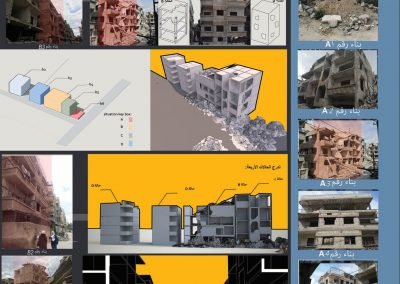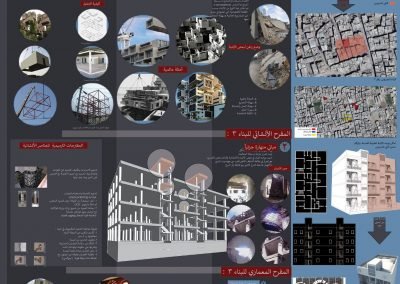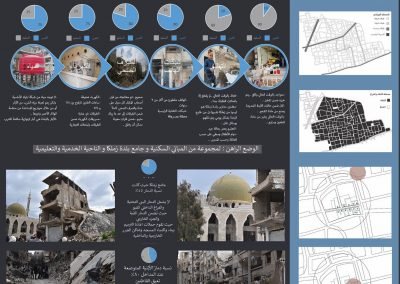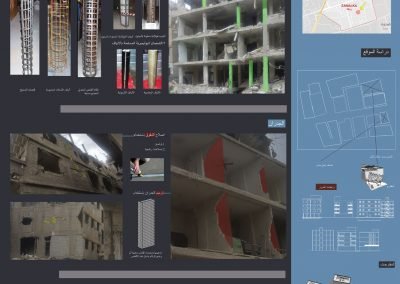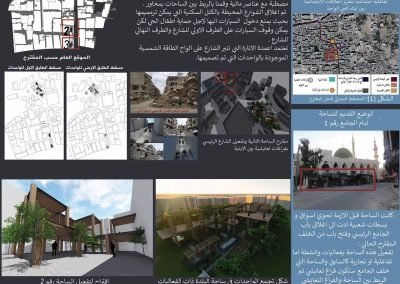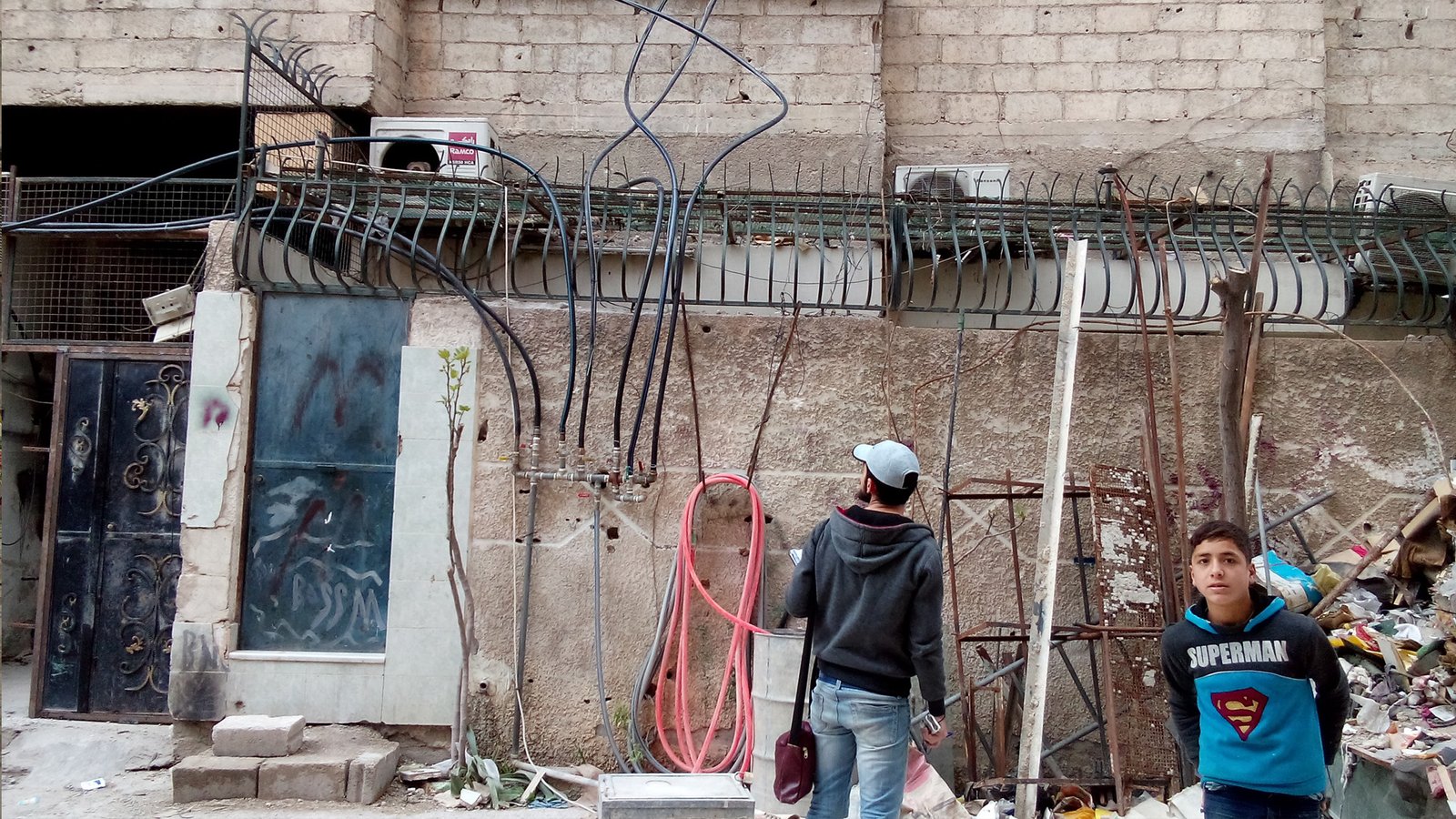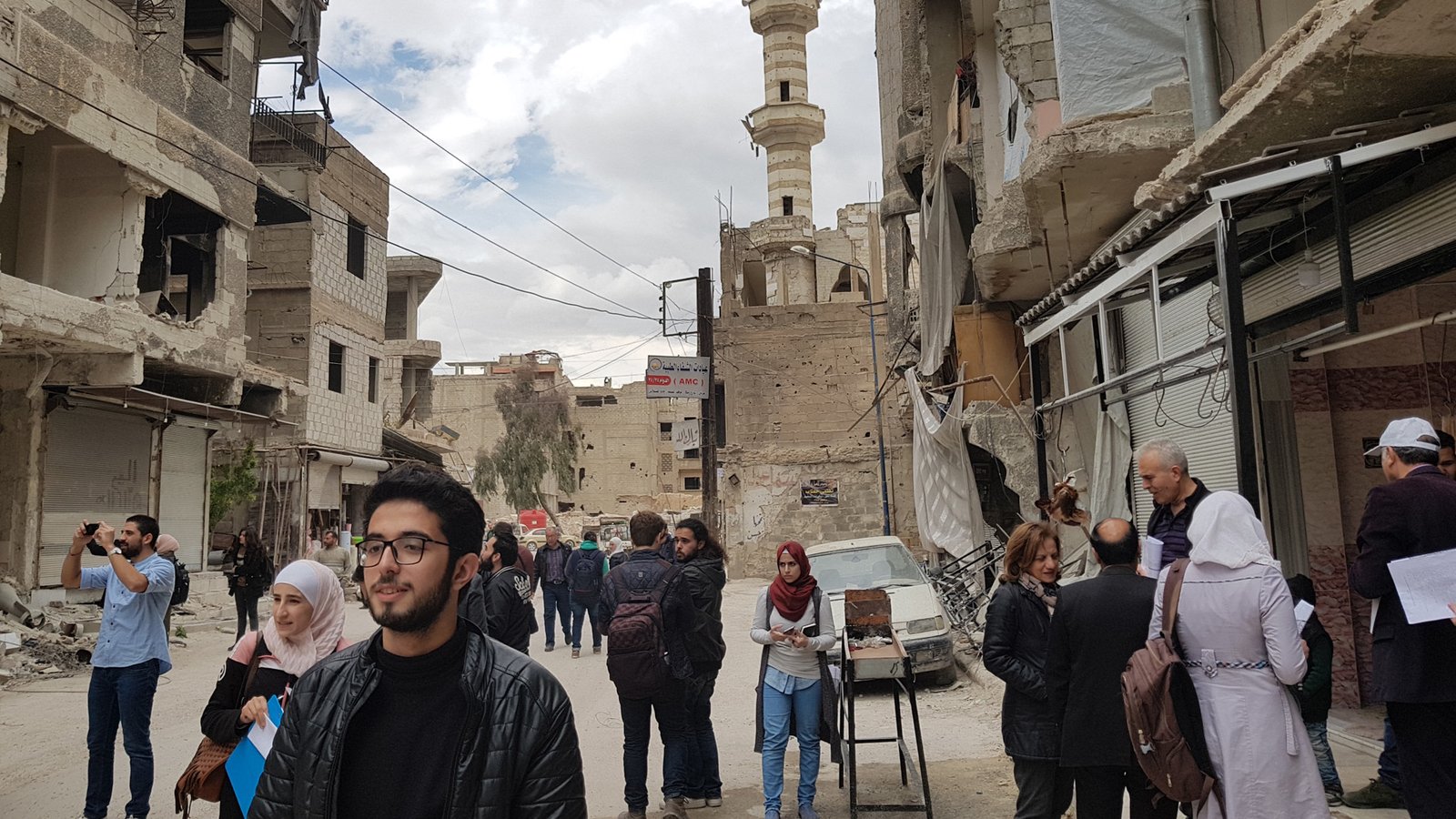Re-Coding II _Rehabilitation Workshop in Al-Ghouta East
The second edition of the Recoding Workshop took place from 24–28 March 2019 by Reparametrize Foundation in collaboration with Faculty of Architecture, Damascus University.
Reparametrize Foundation in Syria, in cooperation with Damascus University, had the official design and implementation workshop in Syria entitled “Recoding II”
Zemalka is a Syrian town belonging to the Duma region in the province of Damascus. It is very close to the capital Damascus, 10 kilometers east of the capital. It is part of Al Ghouta (the urban extension of the capital). Zemalka was one of the most beautiful cities of the Damascus country-side, which was almost completely destroyed during the war. In the latest statistics of the population of the city in 2012, the population was more than 150 thousand people.
The approach of this workshop is to work on one area that was partly damaged by the war, and later applying this morphology on other areas of Syria.
The workshop methodology implies two aspects: First, building a survey experiment to produce and present analytical data of the local community in the damaged areas affected by the war,under-standing their social structure, daily life struggles, needs and expectations. Second, documenting the affected areas and analyzing their characteristics of circulation, social structure, infrastructure, structural situation and urban fabric, by using 3D scanning technology, collecting and sharing data that the students have gathered through mapping destructed regions. This Experience can never-theless reflect lifestyles and inhabitants and the needs of the local people in every district visited. The selected area for the case study was “Zamalka”, a suburb located east of Damascus.
Program
During the first phase the 152 students divided by 5 groups.( the current service situation – Struc-tural Case – Architectural Status – Social Status – Urban Status). each group researched for similar examples.
They explored various methods to understand the case which they are working on it. This day was an intense series of tutorials, conferences, , discussion ,and lectures presenting by groups of professors from various disciplines similar examples and the mechanism of work in the workshop that will serve as an important database on which to begin our proposals. Our analysis will be re-sponsive and dynamic, allowing us to dissect the temporal tendencies of the project.
The second day: the distribution of tasks to the participating groups, field visit to the site including (documenting the current situation through photography and interviews) gathering information.
Content
Phase I: (Current Situation) Academic Research:
– Students are divided into 5 groups:
Group 1: the current service situation (for buildings and streets): Students study the current service situation of electricity and health of buildings and surrounding streets on the ground by collecting information (photos + video + reports) with similar examples.
Group 2: Structural Case: Students study the physical state of columns and tiles, observe damage caused by war, and determine damage by collecting information (photos + video + reports) with similar examples.
Group 3: Architectural Status: Students study the facades and functional spaces and take the di-mensions of buildings (facades + Plans) with similar examples.
Group 4: Social Status: Students collect data from the local people in the neighborhood, study psychological and social aspects, and referendum on the rehabilitation phase to record their ideas and understand their needs with similar examples.
Group 5: Urban Status: Students document roads, sidewalks, green spaces and urban spaces with similar examples.
The Field trip
The method was walking around in the whole region of Zamalka on our own with the local inhab-itant. We wanted to have a closer look at the area, for getting an overview from the bottom to the top. Through case studies we wanted to have a closer look to get an impression of everyday life in Zamalka.
The intention was getting an understanding of the site, its characteristic of circulation, social struc-ture and urban fabric.
Experience can reflect nevertheless lifestyles and inhabitants and the need of the local people of Zamalka.
Process


